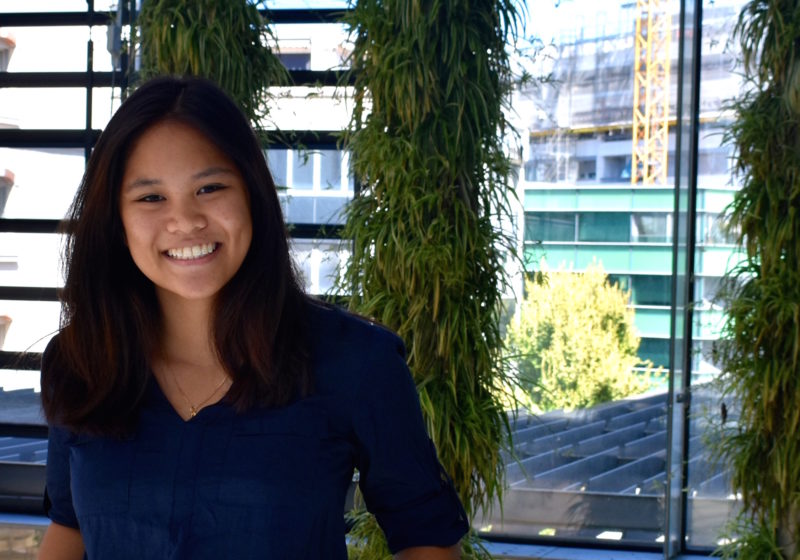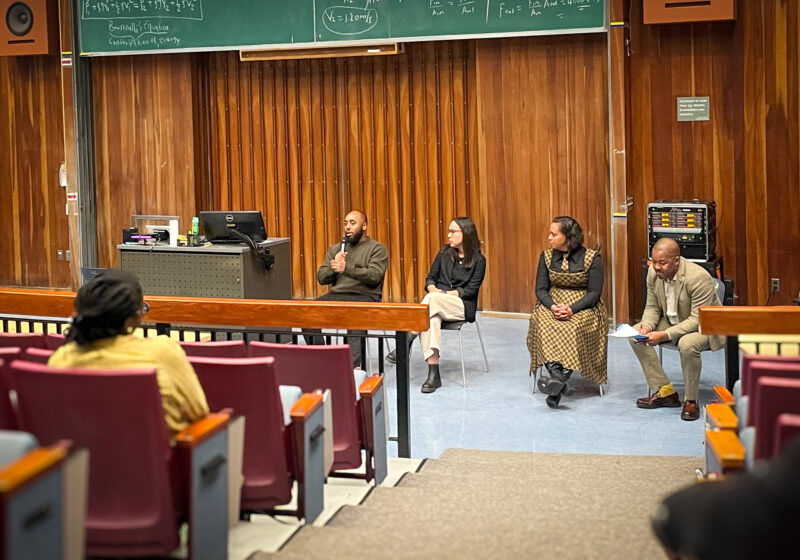Chantelle Lim didn’t wait to get involved in research.
As a senior biomedical engineering (BME) major, Lim has been involved in research since her first year. By attending research panels inside and outside the department, she learned about opportunities early on in her academic career. “I really benefited from these during my first two years,” Lim said. “There are so many resources; you can get involved in research really early.”
Lim decided to concentrate in Biosignals and Biosystems for her degree but was still able to learn about the other areas of BME. Throughout the curriculum, Lim has worked on several hands-on projects spanning a variety of concentrations. “Those hands-on projects really help,” Lim said. “It helps you decide if you want to be an engineer. I really like it because it gives insight into different aspects of engineering.”
For example, Lim’s senior design project will involve 3D printing, which is unrelated to the research she has done independently. Lim is currently working in the Lalor Lab for Computational Cognitive Neurophysiology, using electroencephalogram (EEG) technology to decode the relationship between hearing and vision. Lim was the first undergraduate to join the lab, started by Professor Edmund Lalor when he came to UR in 2016.
The lab is curious about a possible relationship between auditory and visual stimuli, and how eye movement may contribute to a person’s ability to listen to and comprehend input. A camera detects the subjects’ eye movement, while EEG electrodes pick up on brain activity.
“[We] wanted to see if eye movement affects how a person is concentrating, what the brain is doing and what the eyes are doing,” Lim said.
Lim was involved in analyzing the data from this study. She created a map of eye movement for subjects listening to different sounds, and compared it to EEG data. This tested whether their eye movement linked to brain activity resulting from auditory stimulation. Understanding how the brain perceives and responds to sound can help inform the design of hearing aids, Lim said.
Though her work at UR mainly involves EEG data, Lim is also interested in MRI research. In her summer lab work, she used MRI data to investigate brain blood oxygenation and how this might be different in people with neurodegenerative diseases. For example, Lim said, you might see higher levels of blood oxygenation in Alzheimer’s patients. “It blows my mind that we can’t decode or predict what the brain is doing,” Lim said. “We’re really improving in that area.”
EEG and MRI technology are among the tools at scientists’ disposal for improving personalized therapeutics and medical equipment. “I’m really interested in how biomed research can help patients,” Lim said. “EEG stuff can translate into improving medical care and diagnosis.”
During the semester, the BME curriculum is demanding, and students must balance their commitments to multiple courses and hands-on projects. Lim enjoyed having more time over the summer to dive into research.
“During the summer, you really understand the problem and have complete ownership of a project,” Lim said.
Still, Lim appreciates the benefits of engaging in multiple smaller projects throughout her time at UR.
“You can get a lot out of this program and the whole department if you take advantage of it,” Lim said.
Lim also serves as a TA for three BME courses, which bolsters her own understanding while aiding other students’ education. Teaching difficult material to a diverse group of students challenges Lim to cater to different learning styles, and demands that she know the information inside and out. “You reinforce what you learned before and sometimes realize you actually don’t understand until you teach it to someone else,” Lim said.
Upon graduation, Lim aims to pursue a Ph.D. in biomedical engineering, but her career may branch away from academia. Lim wants to see the direct impact of her work, and basic research is usually far upstream from its ultimate application. “I like to see that my work is actually going to impact someone,” Lim said. She imagines pursuing a career in industry research.
“But who knows what will happen after five or six years,” she added.




